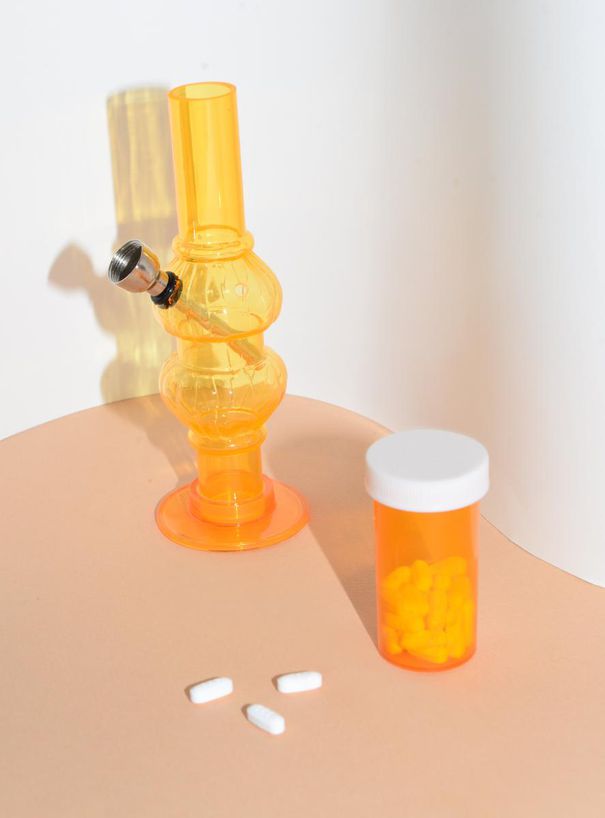“I am basically a walking PSA for CBD,” says Sasha Exeter. The 39-year-old Toronto content creator and model has a rare kidney disease and fibromyalgia, both of which have left her bedridden for months in the past. To manage her pain, she has tried pain-blocking injections and pills, physiotherapy, chiropractic adjustments, therapy, restorative yoga, reiki and osteopathy, but her go-to treatment these days is cannabis. “If I am in the midst of a pain flare-up or having issues with my anxiety, I am taking it several times a day,” she says.
Exeter was introduced to cannabis as pain management by her family physician in 2010 but, more recently, has been managing her treatment on her own. “I had to try several strains and different products to find something that was effective; however, when I eventually did, it was life-changing,” she says. She’s just one of many women on social media singing the praises of cannabis to help treat period pain, migraines and endometriosis, with or without a prescription. “There is a general trend of people looking for more natural remedies as an alternative or supplement to traditional medication,” says Trang Trinh, founding director and CEO of TREC Brands, parent company of cannabis brand Blissed.
Medical cannabis has been legal with a prescription since 2001 in Canada, used to treat ailments from irritable bowel syndrome to arthritis. But cannabis use often falls somewhere between medicinal and recreational, especially since recreational cannabis was legalized in 2018. In what’s often called the second phase of recreational cannabis legalization, regulations on edible and topical cannabis products came into effect on October 17. Products such as tea blends, cookies and sparkling waters — many of which are marketed in the lifestyle-meets-health area of wellness — will hit shelves at licensed retailers as of December. With increased accessibility, increased use seems inevitable. Here’s what you need to know about using cannabis to treat pain.
How is chronic pain treated medically?
First, it’s important to understand what chronic pain is. “Chronic pain is a sensory and emotional experience that is subjective, but very much real,” says Women’s College Hospital pharmacist Karen Ng, who works within the Toronto Academic Pain Medicine Institute. Feelings of pain are processed in the central nervous system, and an overactive nervous system will send lots of “pain alarm” signals to the brain.
When it comes to medication, drugs like duloxetine and Lyrica (an antidepressant and anticonvulsant, respectively) are considered first tier, opioids are second tier and cannabis ranks as third tier, specifically for chronic neuropathic pain related to the abnormal processing of nerve signals.
In the past 10 years, medical treatment has shifted away from medication toward a more holistic lifestyle approach, including psychotherapy and physiotherapy. “What we’re realizing through more studies is that a lot of the medications we use for chronic pain aren’t very efficient,” says Ng. “They don’t provide long-term, significant pain reduction, so the model now is moving more toward self-management for patients, using lifestyle skills to turn down that pain alarm.”
Is cannabis effective at treating pain?
It shows some degree of benefit for reducing intensity of neuropathic pain, but there is no robust evidence that cannabis effectively treats acute pain, post-surgical pain, trauma pain, headaches and migraines, osteoarthritic pain or fibromyalgia. In her practice, Ng has found that very few people report pain improvement when using cannabis.
Because cannabis has been used medically since 2001, there are many studies on the relationship between cannabis and pain, but according to Ng, most of them are poor quality. She hopes to see more longer-term studies to give us a better understanding of the long-term effects of cannabis use in patients who report pain and more studies that compare cannabis to other medications.
Why do people find cannabis effective for pain if studies show it isn’t?
Possibly because it’s a very complex substance. “This plant has almost 400 chemical compounds, and more than 60 of them of them are cannabinoids, which are chemicals that could potentially work in pain,” says Ng. “We really only know two of them, THC and CBD.” As well, people are using cannabis in myriad ways, strains and doses, so it’s hard to measure dosage and effect.
What do we know about the benefits of cannabis?
“A lot of our fibromyalgia population has sleep challenges, and so when they use cannabis, that might help them to sleep,” says Ng. “We know that sleep and pain are highly linked, so this might help their pain management.” Exeter mentions improved sleep as one of cannabis’s prime benefits: “It helps induce relaxation in my muscles and my mind, making it easier for me to go to bed,” she says.
Also, the terpenes in cannabis, which give it its aroma, “have natural anti-inflammatory, antifungal and antimicrobial properties,” says Trinh.
What are the risks of using cannabis for pain?
“Generally, people can’t overdose on cannabis, compared to opioids, because it doesn’t bind to the breathing centre in the brain the way an opioid does,” says Ng. “If someone were to take too much opioid they would overdose and stop breathing — that doesn’t happen with cannabis.”
Many people using cannabis for pain choose a strain with high CBD and low or no THC, but it’s important to note that THC affects cognition and response time, putting you at higher risk of accidents. There is evidence that THC is addictive, particularly if you have strong family or personal history of addiction. And it may destabilize mental health conditions, such as depression and anxiety, if they are already poorly managed. “Clinical studies have suggested that lower doses of THC appear to have an anti-anxiety and mood-elevating effect whereas high doses of THC can produce anxiety and lower mood,” Ng says. It’s also not known exactly how cannabis interacts with other medications.
Weighing the costs and benefits of any drug is crucial, so if you’re thinking of using cannabis to treat pain, talk to your doctor.





